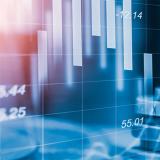
Net Zero is a make-or-break moment for the global economy and investors can help emerging markets take full part in the energy transition.
Cinderella had so much fun at the ball that she had to rush down the stairs to get away in her carriage before it turned into a pumpkin with the last stroke of midnight.Charles Perrault’s beloved fairy tale became a ballet and several operas, to be enjoyed by children and adults alike, such as Jules Massenet’s Cendrillon, premiered in 1899 in Paris. But we doubt the humanity wants to be caught out, Cinderella-like, late for energy transition.
Emerging Markets: Leading in new-built clean energy asset finance globally
It will be impossible to reach the crucially important global Net Zero goals without emerging markets. Representing over 62% of the world’s population and 48% of global emissions[1], emerging markets should be a key focus of sustainable impact investors. The scale of the challenge is enormous: emerging markets need to find an additional USD94.8 trillion to transition to net zero by 2060[2]. And yet, in the main, international investors seem to be staying away, spooked by geopolitical potential risks and uncertainty.
So how can responsible investors support emerging markets’ energy transition without compromising their objectives?
Focus on Climate Change Opportunities
Some emerging market companies will be among the most important enablers of energy transition, not only in emerging markets themselves but the rest of the world too.
Over the ten years from 2020 to 2030, for example, solar photovoltaic (PV) and wind energy generation capacity globally is set to increase by fourfold. Most solar panel producers are based in Asia. Over the same period, the sales of electric cars are projected to grow by about 18 times. Solar PV is now one of the cheapest energy options globally[1] and China and the rest of Asia will account for the lion’s share of the expansion of solar power generation through to 2028. Even a year ago, at the end of 2021, China boasted 300 GWt of installed solar capacity[2] compared to 160 GWt for the European Union (EU)[3]. And the, of course, there are electric vehicles.
Going electric
When it comes to electric vehicles, the planned the shift to zero-emission mobility across the developed economies cannot be achieved without emerging markets. For example, recently the EU decided that all new cars and vans registered in Europe will be zero-emission by 2035. As an intermediary step towards zero emissions, the new CO2 standards will also require average emissions of new cars to come down by 55% by 2030, and new vans by 50% by 2030[4].
With the battery accounting for a very sizable chunk in the price of an electric car, Asia is set to become the battery workshop of the world, helped by its collective dominance through the whole supply.
According to Benchmark Minerals, China will have 322 gigawatt hours (GWh) of production capacity in Europe by 2031, with South Korea the second largest at 192GWh, followed by France and Sweden. The US is fifth, thanks to Tesla’s plant in Berlin, followed by Germany and Norway. The UK is eighth with just 20GWh[5].
And other greenablers…
Greenablers are producers of building blocks of a more circular, more energy efficient global economy. Among them are major suppliers of copper and lithium - metals essential for the de-carbonisation. Another example – are producers of semiconductors, which are mostly manufactured in Asia and play a critical role in reducing electricity consumption – and demand for these are growing.
Know How
To identify specific investment opportunities, we believe investors should build an exhaustive universe of emerging market companies playing a positive role in providing climate solutions. Candriam’s approach is to then ‘cluster’ these companies around different themes, such as electric vehicles, renewable energy, software, recycling or the smart grid[6].
In our experience, there are many ‘hidden gems’ companies in emerging companies, whose activities at first glance have little to do with energy transition, but in fact turn out to be important contributors. For example, the Taiwanese financial services company Chailease is not only a specialist in leasing, instalment sales, import and export and direct financing but is also one of the largest owners of solar power plants in the country.
WEG SA is well known international Brazil-based producer electric motors, generators, transformers, gear units and geared motors. What is less known is the company’s high exposure to renewables, e-mobility and industrial automation[7].
Siemens in India experiencing strong demand for industrial de-carbonisation solutions[8] in the form of waste heat recovery systems, biomass solutions and modernisation and upgrades with energy efficiency solutions like eco design transformers[9].
Yadea is the largest player in China’s electric two-wheeler market[10], with almost a third of the domestic market. The company designs, develops, manufactures, and sells electric scooters, electric bicycles, and related accessories. What it makes particularly interesting for us is that Yadea also developed graphene batteries[11], which presented an affordable alternative to acid and lithium-ion batteries.
Clearly among key enablers are the more obvious contributors to the energy transition, such as Sungrow Power Supply, a Chinese manufacturer of solar inverters (PV inverters) with a 21% global market share in 2021[12]. Solar inverter is a device which converts the energy generated by a solar panel into a regular electric current that can be fed into a local energy grid.
Focus on what matters
Global net zero will be achieved when human-caused greenhouse gas (GHG) emissions are cut to absolute minimum, while any remaining “residual emissions” are removed from the atmosphere by plants or new specifically designed for that purpose technologies. Historically, advanced economies have emitted more carbon than emerging markets. Advanced economies of Europe and the US were also the first to cut emissions. However, a global journey won’t succeed until emerging markets feel incentivised to take equally effective measures and investors will play an important role directing capital flows towards climate action enablers. So that humanity won’t have to leap from riches to rags with the last toll of the bell, just like Cinderella.
------
Important
Please note that the companies mentioned in this article are invested by Candriam portfolios at the time of writing.
------
Risks
All our investment strategies involve risks, including the risk of loss of capital. The main risks associated with our Sustainable Emerging markets Equity strategy are: Risk of capital loss, Equity risk, Interest rate risk, Currency risk, Liquidity risk, Emerging market risk, ESG Investment Risk, Risk on A-Shares (China), Sustainability risk.
The sustainability risk refers to any event or situation in the environmental, social or governance domain that could affect the performance and/or the reputation of the issuers in the portfolio. The sustainability risk may be specific to the issuer, depending on its activities and practices, but it may also be due to external factors.
Past performance of a given financial instrument or index or an investment service or strategy, or simulations of past performance, or forecasts of future performance does not predict future returns.
------
[1] Page 11 IFC_GreenReport_FINAL_web_1-14-21.pdf
[2] Leveraging markets for the green push | Standard Chartered (sc.com)
[3] CLSA, 2022, Global clean energy, 2023 outlook: Time for realism
[4] China: installed solar power capacity 2021 | Statista
[5] In focus: Solar energy – harnessing the power of the sun (europa.eu)
[6] https://ec.europa.eu/commission/presscorner/detail/en/ip_22_6462
[7] https://www.ft.com/content/d407772c-4a76-4e59-9bb0-998b3f22383b
[8] an electricity supply network that uses digital communications technology to detect and react to local changes in usage.
[9] https://www.weg.net/institutional/FR/fr/news/corporate/consistent-growth-supported-by-demand-for-renewable-energy-and-international-expansion
[10] https://www.siemens-energy.com/global/en/offerings/decarbonization-products-solutions.html
[11] https://www.siemens-energy.com/global/en/offerings/power-transmission/portfolio/transformers.html
[13] https://www.prnewswire.com/news-releases/yadea-unveils-the-guanneng-3-with-breakthrough-long-battery-life-301576616.html
[14] https://renewablesnow.com/news/huawei-sungrow-control-44-of-pv-inverter-market-in-2021-791023/




